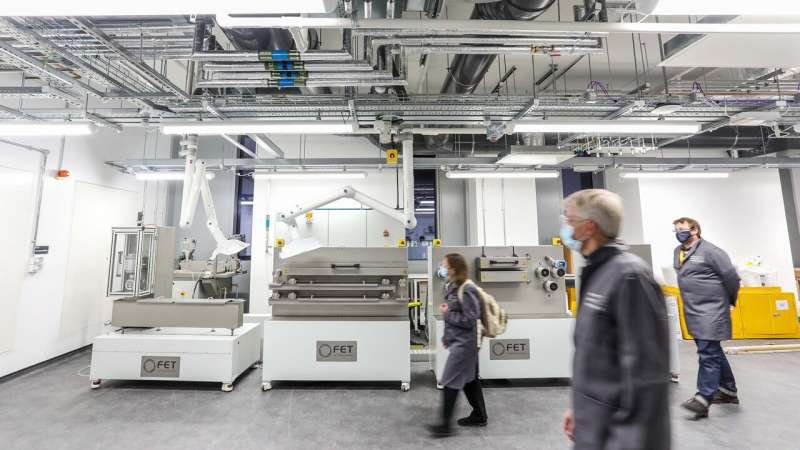Carbon fiber is a critical material for industries such as aerospace and automotive, prized for its strength and lightweight properties. However, traditional carbon fiber production relies on costly, petroleum-based materials, driving up costs and environmental impact.
Lignin—a widely available by-product of cellulose production, with about 70 million tons generated annually—offers a promising, sustainable alternative. Typically treated as waste or burned for energy, lignin has an untapped potential for high-value applications, including next-generation carbon fiber manufacturing.
From lab to pilot scale
Industry partner Lixea had previously collaborated with Imperial College London, where researchers developed a patented technology to convert lignin into carbon fiber at a small lab scale (1 ml production). The process leveraged two key innovations:
- Ionic liquid technology—dissolving various lignins while allowing the liquid to be recycled after fiber formation.
- Polyvinyl alcohol (PVA)—a non-toxic, biodegradable polymer used as a spinning aid.
This approach not only enables the production of high-lignin-content fibers (75%–90%) with excellent structure and yield but also significantly reduces costs. By replacing petroleum-based precursors with lignin and ionic liquids—both renewable, lower-cost, and less toxic materials—production costs could be cut by three-to-five times.
Manchester’s ability to scale up
To validate this technology at scale, researchers at The University of Manchester, led by Jonny Blaker, Professor of Biomaterials created a pilot-scale demonstration at the Fiber Technology Platform, at the Henry Royce Institute, using its wet spinning line. Lignin was sourced from Lixea’s pilot plant, which uses the same ionic liquid to extract lignin from wood waste, ensuring process alignment with the company’s existing technologies.
The Manchester team tested three different lignins—two from spruce sawdust, and one from bagasse, a by-product of sugar production—with the bagasse-derived lignin proving most effective, enabling continuous fiber spinning at pilot scale for the first time.
Key learning and future development
Several critical insights emerged from the trials. First, drying control was crucial to prevent fiber shrinkage. Second, lignin solutions became more viscous over time, requiring adjustments to maintain quality. And third, spinneret design affected fiber uniformity, highlighting the need for further refinement.
Through the project, the team successfully produced continuous fibers up to 5 meters long. The next steps include refining fiber drying, collection, and carbonization processes, which will be essential for scaling up this breakthrough technology in the U.K.
A milestone for sustainable carbon fiber
Manchester’s success in scaling up this novel technology marks a significant step toward commercially viable, sustainable carbon fiber production.
“We’re excited to use our capability to show the scale-up potential of this pioneering process to create a low-cost, renewable alternative to conventional manufacturing.
“Thanks to the equipment and expertise available at our pilot facility, we were able to produce continuous fibers using lignin from Lixea, addressing key challenges in formulation and fiber drying, while also ensuring it could work with Lixea’s wood fractionation technology.
“This trial represents a significant step toward making cost-effective, renewable carbon fiber a reality,” says Professor Blaker.
With continued advancements and industry collaboration, lignin-based carbon fiber could soon become a commercially scalable, high-performance, and environmentally friendly alternative to petroleum-derived materials. Manchester’s pioneering role in technology scale-up reinforces its position as a leader in materials innovation and sustainable manufacturing.
Provided by
University of Manchester
Citation:
Scaling sustainable carbon fiber production: A breakthrough in lignin-based technology (2025, February 17)
retrieved 18 February 2025
from https://phys.org/news/2025-02-scaling-sustainable-carbon-fiber-production.html
This document is subject to copyright. Apart from any fair dealing for the purpose of private study or research, no
part may be reproduced without the written permission. The content is provided for information purposes only.











